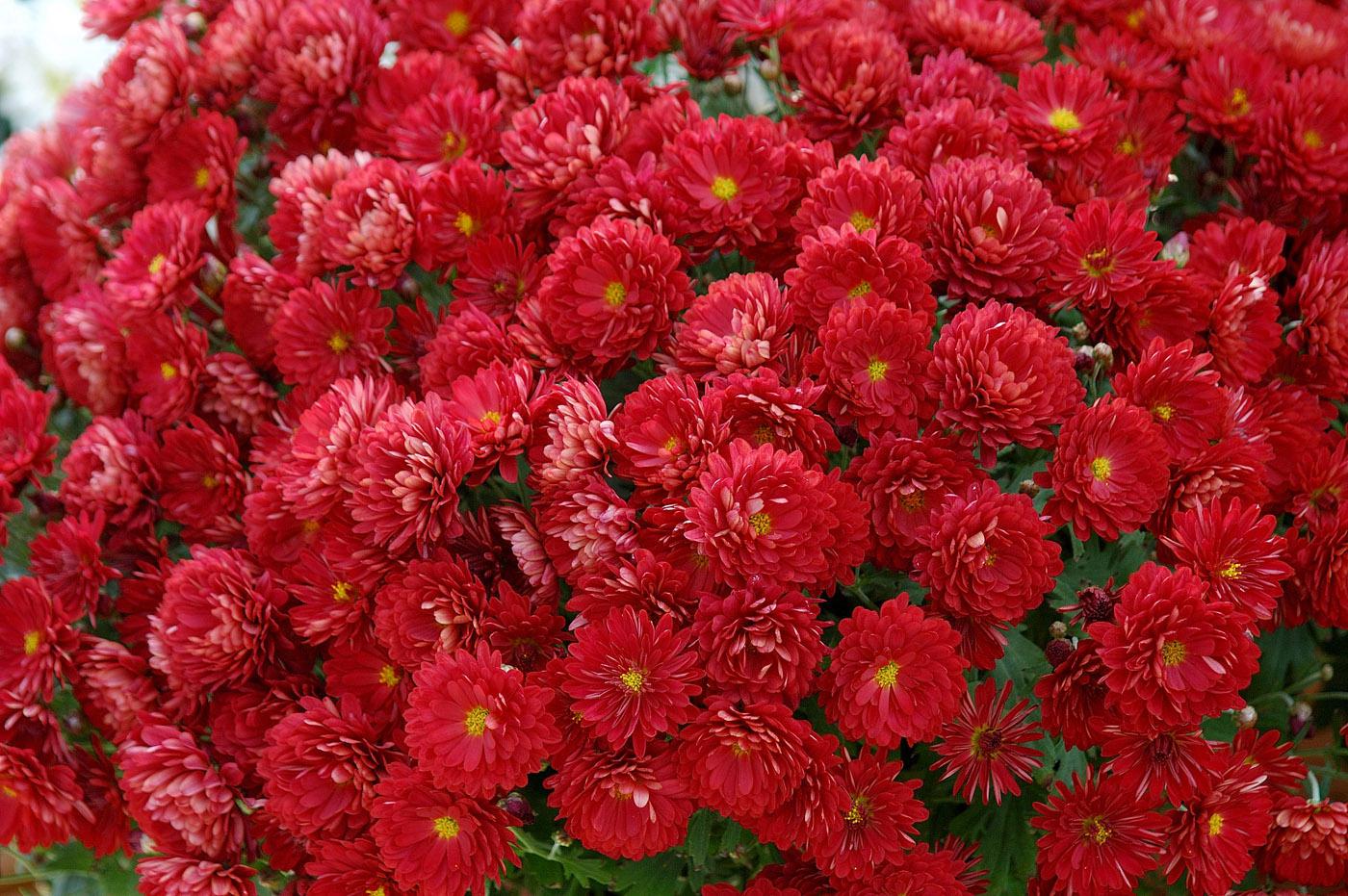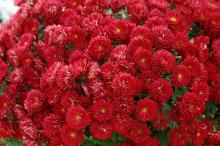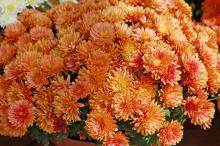Information Possibly Outdated
The information presented on this page was originally released on October 1, 2009. It may not be outdated, but please search our site for more current information. If you plan to quote or reference this information in a publication, please check with the Extension specialist or author before proceeding.
Belgian mums offer incredible performance
By Norman Winter
MSU Horticulturist
Central Mississippi Research & Extension Center
The audience gasped as I gave the pot of mums a big bear hug, thinking I was going to squeeze the life out of it. That was the scene last week when I spoke at a Spirit of Women Conference.
Gardeners know that squeezing mums is normally a recipe for disaster as branches break like crumbling pretzels. But these were Belgian mums, so the hug didn’t hurt them.
I first wrote about Belgian mums eight years ago after being astonished at something I witnessed. While filming mums for Southern Gardening TV, we perched a nice pot on a fence post to get a special angle. Before anyone could react, a gust of wind blew them off the post and they landed upside down. Despite falling more than 3 feet, no branches had broken.
Today there are dozens of new varieties and colors in this group. Belgian mums come in early-, mid- and late-season varieties, so with a little planning, you can have mums blooming all fall.
We plant hundreds of them each year at Mississippi State University’s Truck Crops Experiment Station in Crystal Springs. We evaluate their performance and let the public see their beauty when they come to our annual Fall Flower and Garden Fest each October.
We plant our mums in full sun on raised beds with fertile soil that drains well. We change our display beds often, but we find the Belgian mums returning faithfully in the spring. Most of us use mums to give a festive look as the seasons change, but few gardeners think about plant combinations when using mums.
In our display gardens, we’ve partnered rusty orange varieties with Russian sage. We’ve used yellow varieties as companions with tall Mystic Spires salvia, and we’ve shown almost any color of mum can be used effectively with ornamental grasses like Hameln dwarf fountain grass.
This year, we are being even more innovative. We have them growing with drifts of Black Pearl ornamental peppers in one section, and elsewhere we are growing them with a fresh crop of cut-flower-type zinnias.
We are also using them in various partnerships with coleus. We cut the coleus back hard a few weeks ago, and it responded like it had been given steroids. The coleuses are dazzling with incredible new growth on stocky plants.
I could give you a big list of Belgian varieties by name, but to be honest, the names are a little strange. The colorful tags will tell you they are Belgian mums, so don’t let the names throw you -- these are great new mums that have changed the face of our industry.
After the mums succumb to freezing weather, trim the foliage back to just above the ground and give them a good layer of mulch. It is common for mums to have a good spring bloom. Afterwards, cut them back again and fertilize them to get them ready for fall.
Mums are at your garden center now, so buy some early-, mid- and late-season selections. Get them in tight bud to allow for maximum landscape impact, and buy some blooming now to add instant color for those game day parties.









